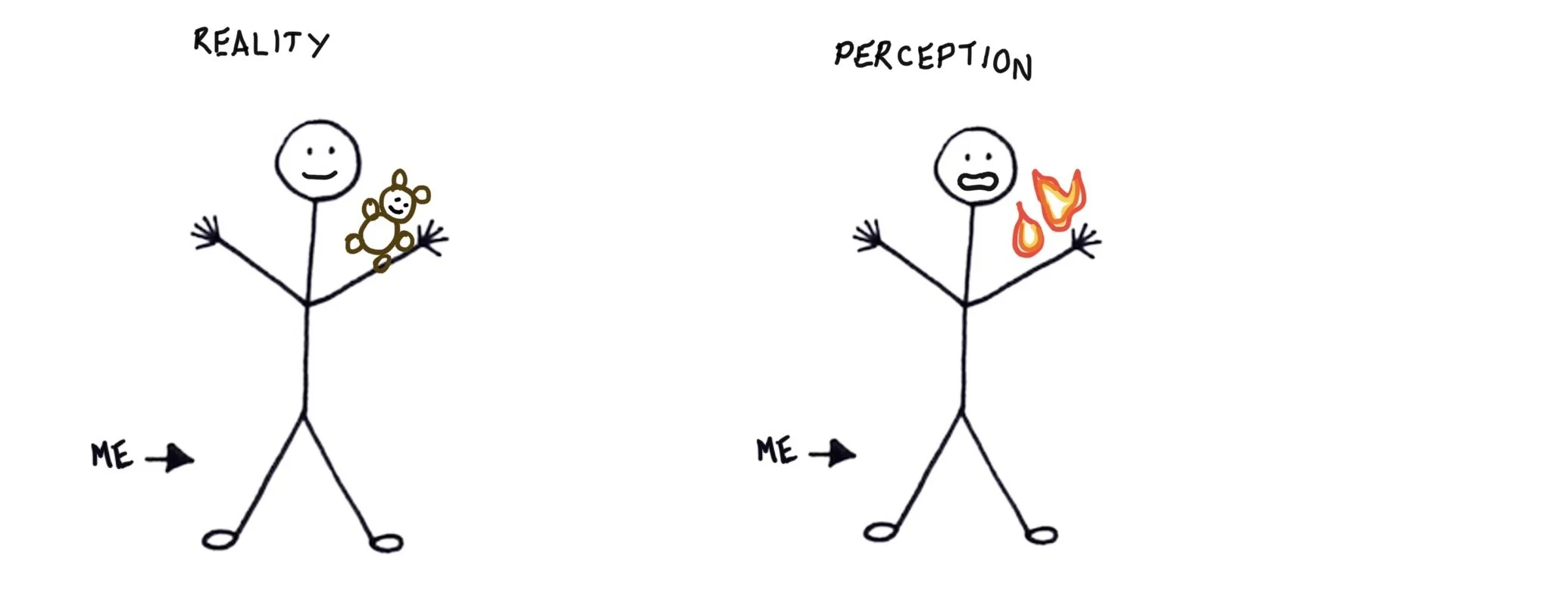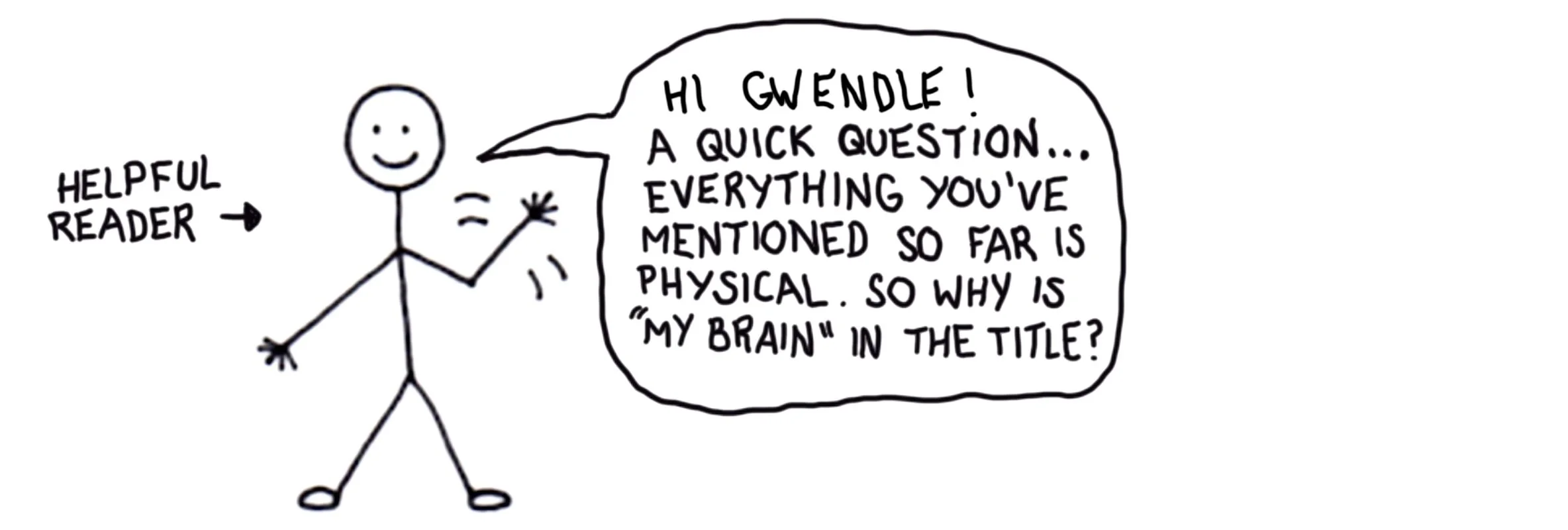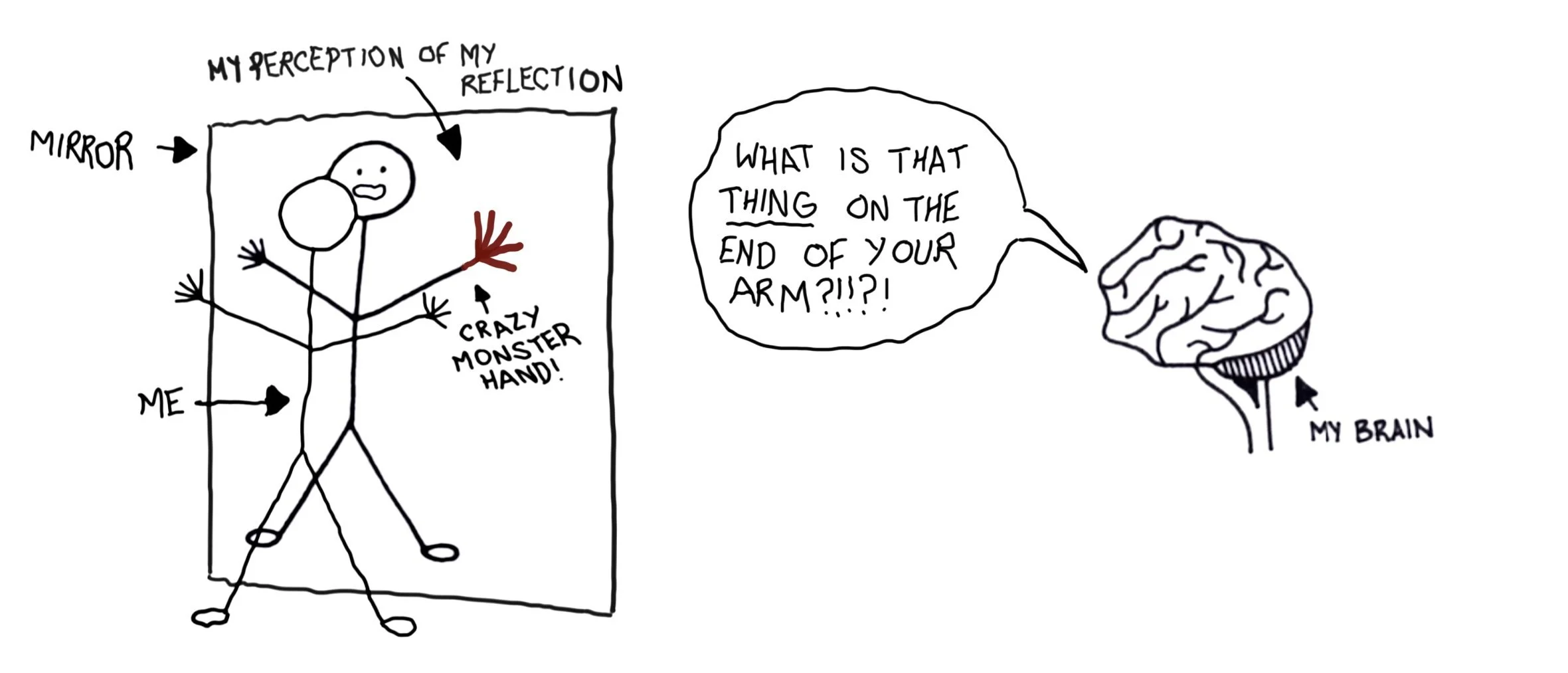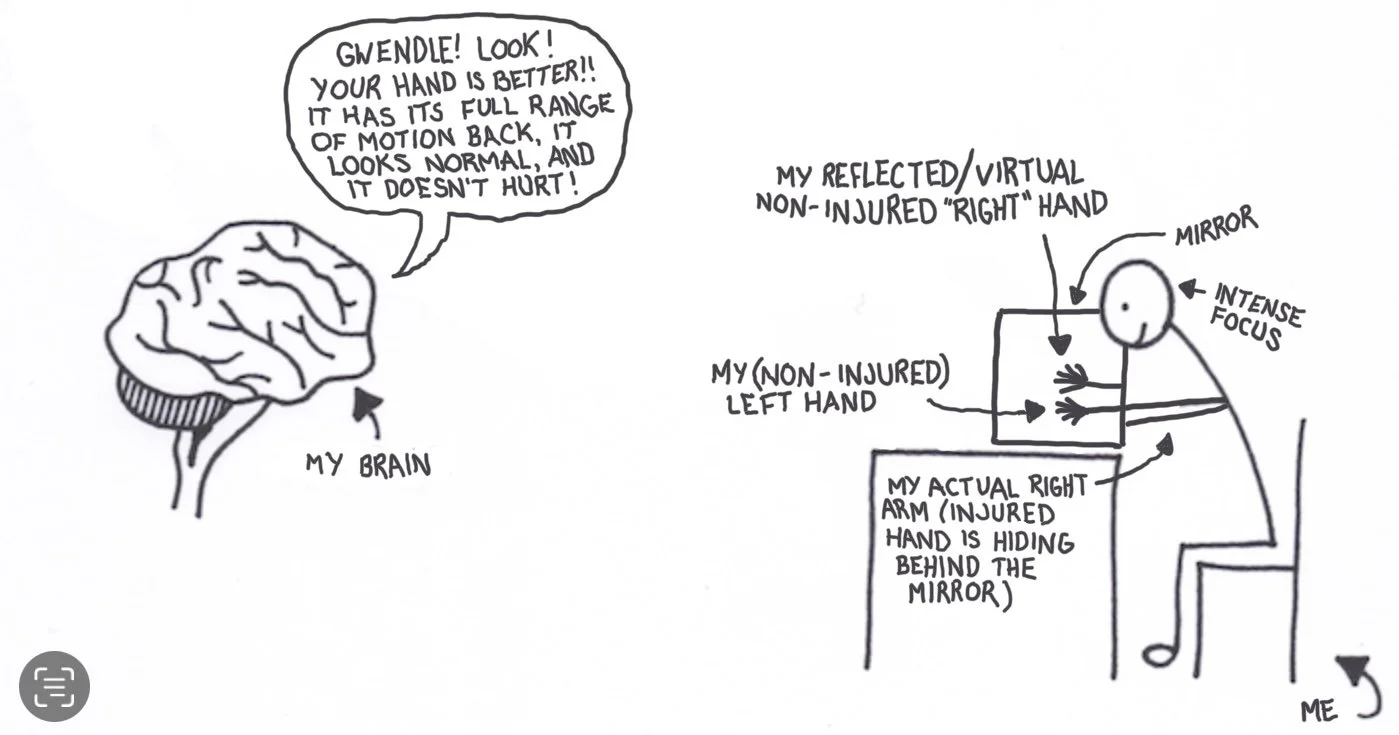When my half-cast came off two weeks after they installed the metal plate in my wrist, I was switched to a removable brace, and told to start physiotherapy as soon as possible (apparently the metal bits act as an “internal cast”, and hold everything steady while it heals — who knew?)
Several weeks later, my pain was increasing and my mobility was decreasing, which is the opposite of what should typically happen; my hand was fairly swollen and discoloured; my skin was shiny, thin, and translucent, making my veins more visible; the hair on my hand and wrist came in darker and thicker; and my muscles had atrophied more than was usual. This collection of symptoms lead to a referral to a Physiatrist, who (literally yesterday) confirmed the suspected diagnosis of Complex Regional Pain Syndrome, a form of chronic pain that can occur after physical trauma or surgery (or in very rare cases, spontaneously). The risk is higher in people with certain connective tissue disorders (me), and in people who have lived with chronic pain (also me), so here we are.
In patients with CRPS nerves in the affected area are either damaged or otherwise malfunctioning, causing them to send inconsistent or incorrect signals to the various components of the affected limb. The condition worsens and can become irreversible if left untreated, making the over-three-month wait for an in office visit with the specialist slightly nerve wracking. The good news is that most of the treatment options (the non-invasive, non-dangerous, non-steroid-injection ones) were available to me while I waited, and he recommended that I continue with all of them.
To restore the mobility of my wrist and hand I do a series of fairly standard physiotherapy exercises that I’m supposed to repeat three to six times per day. That part would have been the same even without CRPS, although I likely would have progressed more quickly.
I also get to do “desensitization” exercises for one to five minutes, three times per day. As mentioned above, my nerves have been misfiring, and one of the things they do is to tell My Brain that normal everyday sensations are actually completely different and highly painful sensations, such as stabbing, burning, being vigorously rubbed with the roughest available sandpaper, or pressing on a bruise (except that there is no bruise).
The official stages to progress through are numbered one through five, but at the beginning there were times when even level one was unbearable, so I added an unofficial ‘level zero”, which is simply blowing on the skin; level one is “light touch”, which consists of gently applying lotion to the sensitive areas; level two is to touch or rub the area with with “soft textures” such as a blanket, stuffed animal, or cotton ball; three is a sensory bin (mine is a dish basin filled a few inches deep with rice); four is gently applying textured rollers or spiky balls “which should feel odd but not painful”; and level five is using the oddly textured items with more pressure and/or exposing the injured limb to vibrations (they suggest an electric toothbrush).
For desensitization related to temperature I do contrast therapy, wherein I alternately submerge my hand and wrist in warm water and ice water for one to two minutes each, four to five repetitions. I’m supposed to do that one twice per day, but I usually only manage once, mainly because I hate the cold, and it’s a big production to do it.
Good question, reader! But have patience, for I’m about to tell you about the strange sorcery that is mirror therapy.
An unfortunate symptom of complex regional pain syndrome is that my injured hand and wrist sometimes feel like they aren’t mine. For forty-one years my right hand has been the slightly more capable twin of my left hand: now, suddenly, it is swollen; sometimes redder, sometimes ghostly pale, and sometimes splotchy; the skin is shiny and translucent; the veins are prominent; the hair is thick and dark, and it is clumsy and weak and it trembles. Sometimes everything I touch feels muted, like I’m wearing a thick rubber glove, and sometimes the lightest touch causes intense pain. My wrist and finger joints, previously hypermobile, are slowly regaining mobility, but at first and for several weeks they could barely move. A couple of weeks ago I caught sight of my hand in a mirror — it was particularly swollen and discoloured at the time, and I was behind on my pain medication, and I experienced feelings of dysmorphia so intense they made me dizzy and nauseous, and I started to cry. My brain saw my hand as huge, and monstrous
— I am extremely grateful that I’ve done so much work to recognize that the things my brain says aren’t always true.
This symptom of My Brain feeling alienated from my hand has the potential to increase pain and other neurological symptoms, and to hamper my progress in all of my more physical therapies. So we use mirror therapy to trick My Brain into believing that my right hand is just as healthy and mobile and pain-free as my left hand.
To be done properly, mirror therapy requires uninterrupted intense focus; this can be difficult because
a) I don’t live alone, so there are distractions
and
b) it is difficult to focus when suffering from brain fog — which is yet another symptom of CRPS, as well as a side-effect of some of my medications.
That’s probably why they say to do it for ten minutes or less at a time, four to five times per day.
A small-ish mirror needs to be set up set up vertically on a table or desk (I attached a mirrored tile to a rectangular vase that previously held my cooking utensils) and I sit with the mirror directly in front of me, mirrored side facing toward and reflecting my uninjured left hand, and my injured right hand hidden behind the mirror. The reflected image acts as a virtual, uninjured right hand.
If I’m able to focus, I look at the reflection, and for two minutes I visually explore the texture and colour of my skin, the shapes of my fingers, the wrinkles on my knuckles, slowly and in detail, all the while thinking “right hand, right hand, that is my right hand”. Then I do movements (mostly my physio exercises) with my left hand, and watch as my “right hand” does exercises with no stiffness or pain. And when I’m successful, My Brain falls for it.
Unfortunately, because I find mirror therapy so difficult and frustrating, I don’t do nearly as much as I should. To be perfectly honest, although I was managing three or four times a day when I first started (before we increased my medication and the inevitable side-effects) at this point I hardly ever do it at all.
But I have a follow-up with the Physiatrist in two months, and if I’m not improving we might have to try steroids, which have uncertain efficacy, and also delightful new side-effects, such as loss of bone density. I’d prefer to avoid anything that makes future breaks more likely, so I’m re-committing myself to mirror therapy two or more times per day.
Hopefully My Brain will focus . . . and be gullible.




